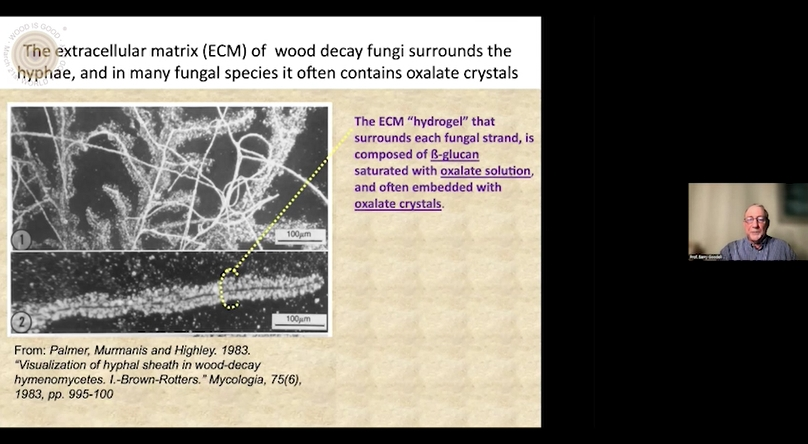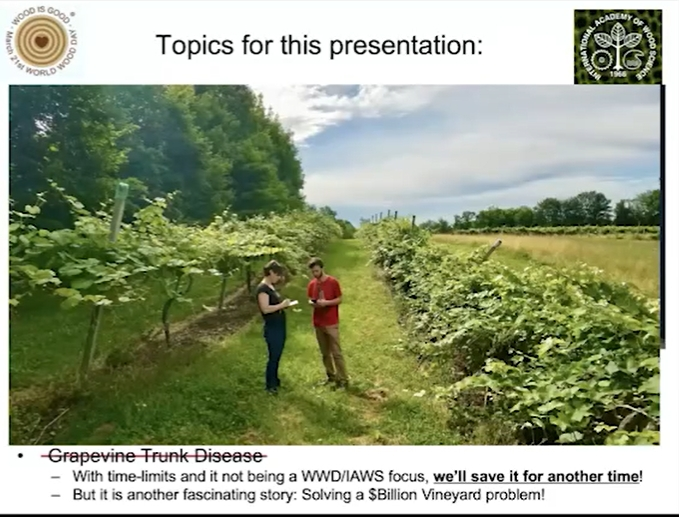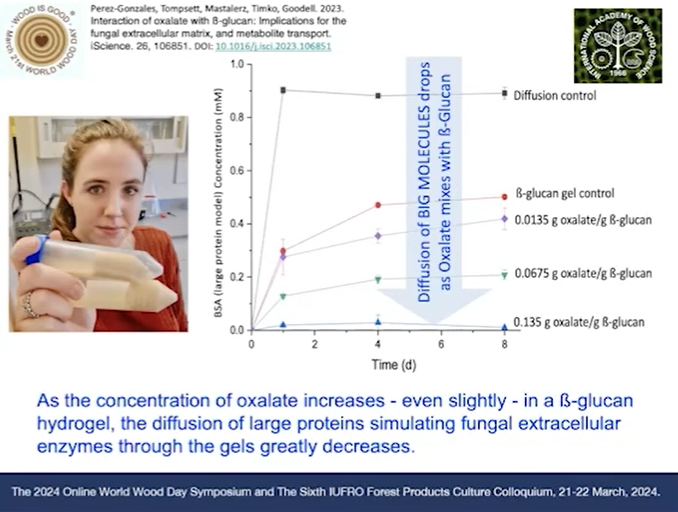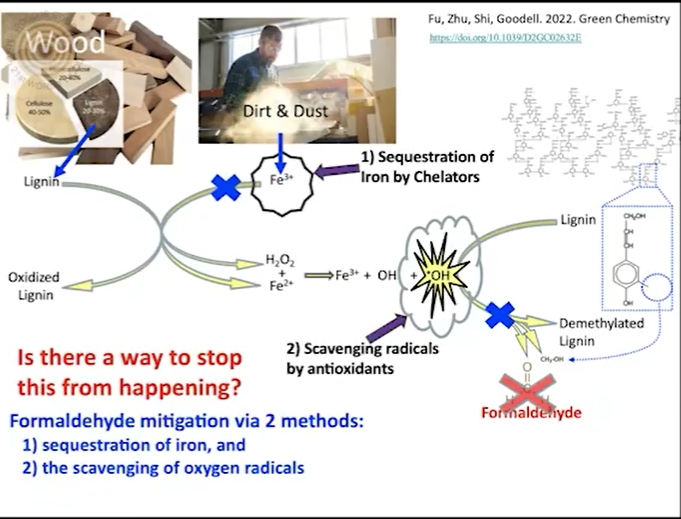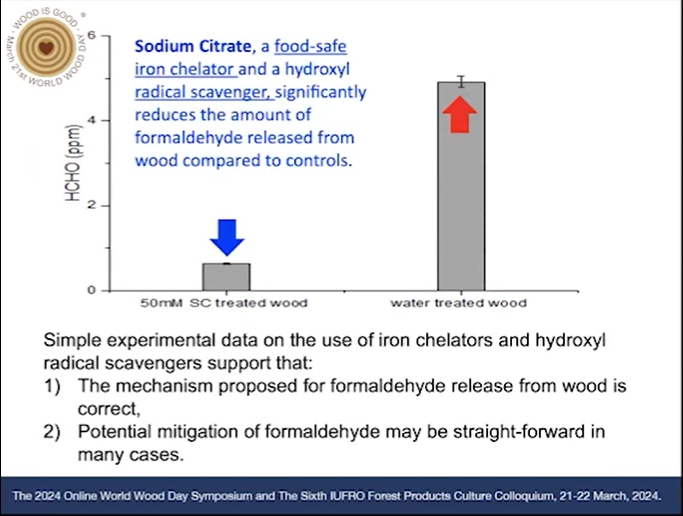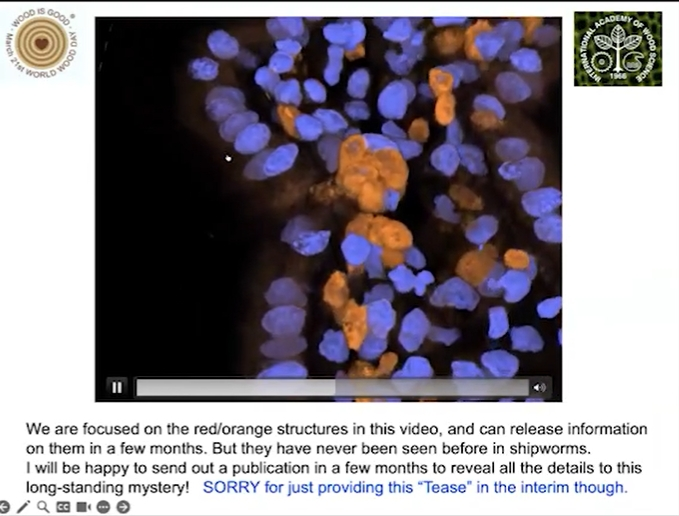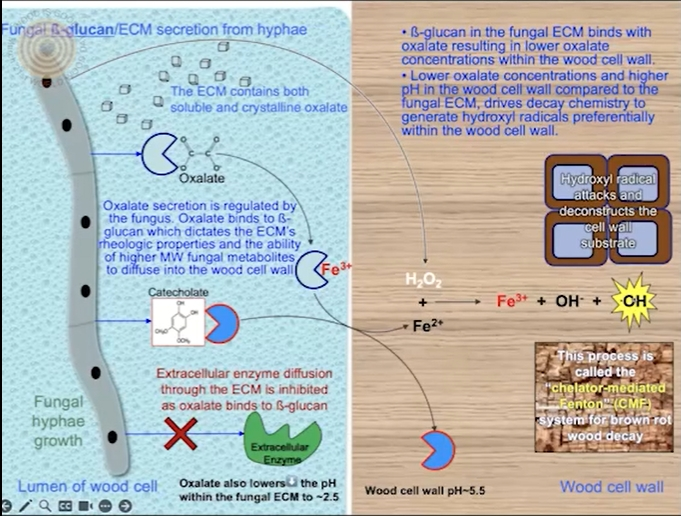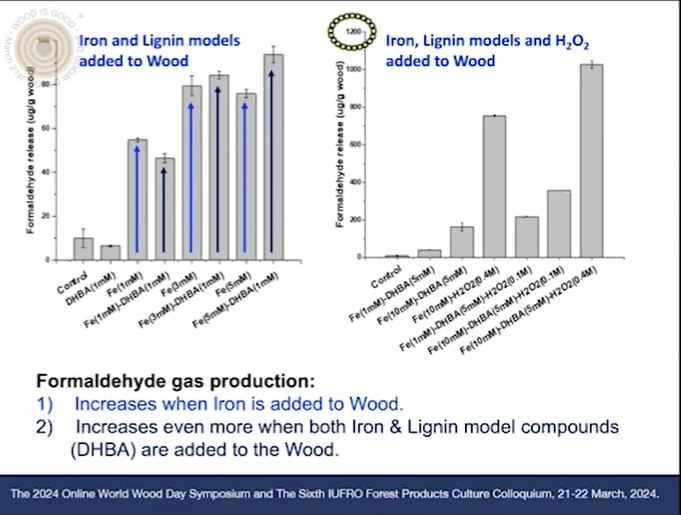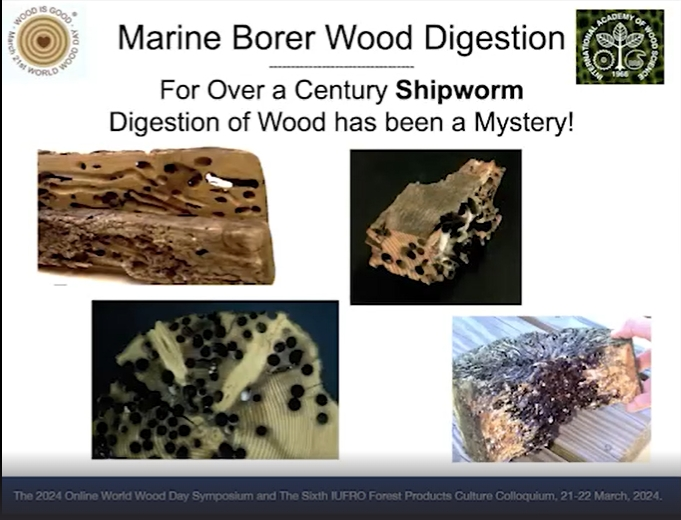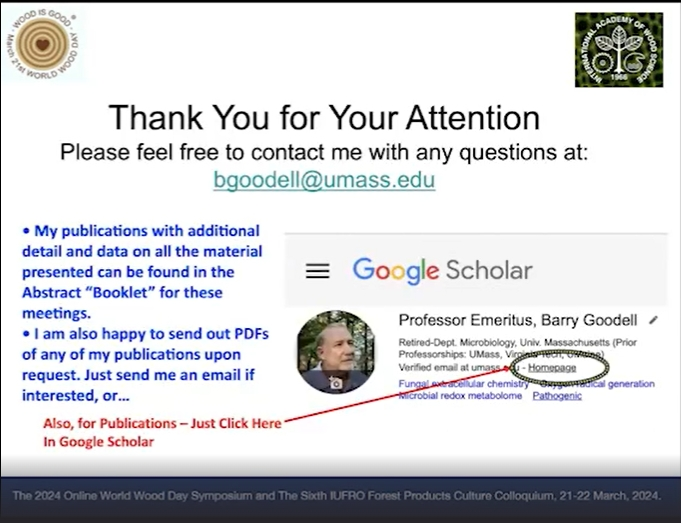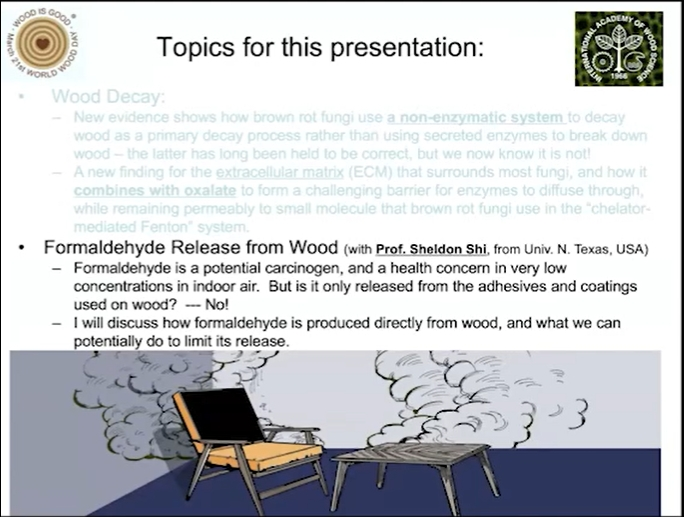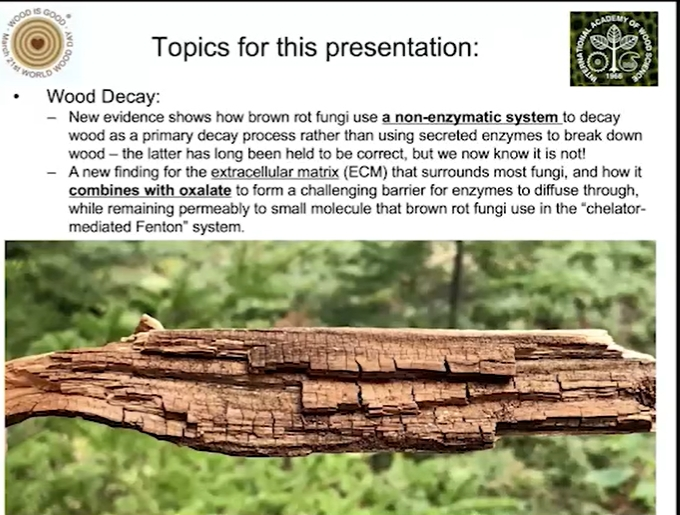会议名称:“2024世界木材日”研讨会暨第六届国际林联(IUFRO)林产品文化研究组讨论会
会议时间:2024年3月21-22日
报告嘉宾: Barry Goodell
嘉宾介绍:美国缅因大学名誉教授/马萨诸塞大学和缅因大学退休教授
报告题目:My Last Hurrah: A Quick Retirement Review and Wrap-up of my Research Results in Wood Science and Sustainable Biomaterials
报告摘要:
After 40 years as a Professor of Wood Science/Sustainable Biomaterials/Microbiology, I retired in September 2023 without the opportunity to present our latest research findings at meetings because of Pandemic restrictions in the early 2020s. I will briefly summarize new findings from that period on: 1) Wood Decay, 2) Formaldehyde Release from Wood, 3) Marine Borer Wood Digestion, and 4) Grapevine Trunk Disease.
1)Further evidence of a non-enzymatic, chelator-mediated Fenton (CMF) mechanism as a major pathway responsible for wood degradation in the brown rot fungi is reviewed. The 3 discovery that the extracellular matrix, produced by most fungi, can potentially restrict extracellular enzyme movement from the fungal hyphae into wood cell walls, lends understanding to why brown rot fungi require a low-molecular weight CMF mechanism to digest wood. https://doi.org/10.1016/j.isci.2023.106851
2)Very low levels of formaldehyde gas are reported to cause cancer. Most formaldehyde research on wood products has focused on the adhesives/coatings used, but biogenic production of formaldehyde directly from lignocellulose is largely unexplored. We found that trace levels of iron within, or on the surface, of wood triggers lignin demethoxylation; a primary cause of low-level formaldehyde release from wood. https://doi.org/10.1039/D2GC02632E
3)The mechanism of wood digestion by marine shipworms is still poorly understood despite considerable in-depth research. Shipworms and their gill symbionts are known to produce cellulases (https://doi.org/10.3389/fmicb.2021.665001) but there is no mechanism yet discovered for lignin deconstruction to allow the shipworm’s digestive enzymes access to the carbohydrate-rich components. Our research into this area is summarized with exciting new findings.
4)Research on fungal pathogens causing significant damage to vineyards found that the brown rot CMF mechanism is also present in some fungi that cause vine damage and woody necrosis in grapevines. This results in significant damage to vineyards worldwide and I will report on our discovery of this mechanism. https://doi.org/10.3389/fpls.2022.921961, https://doi.org/10.3390/jof9040498
责任编辑:iwcs25H


 1,472
1,472